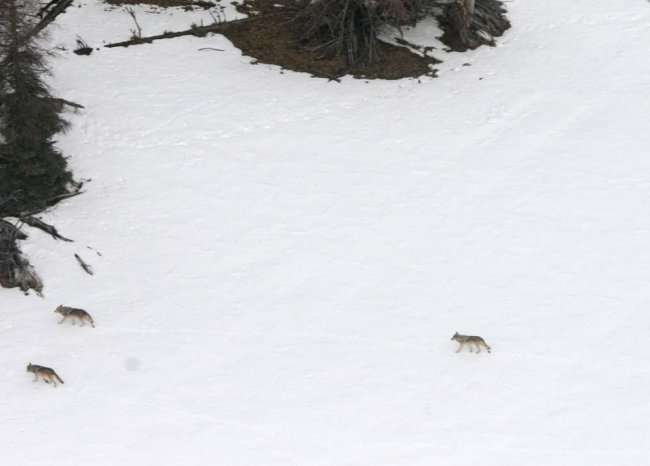No snow days for lobos
When heavy snow keeps cars and buses from moving along streets and roads, schools and businesses often close for a “snow day.” Mexican wolves in the Blue Range Wolf Recovery Area can’t just declare a snow day when snow gets deep and travel is difficult. They must continue to hunt for food in order to survive. Snow in some parts of the recovery area has piled up as deeply as four to six feet during the past few weeks. How do the wolves get around in such deep snow?

Follow the Pack did some research and learned some interesting facts about wolves and snow. First, as we reported earlier, wolves have large, soft, padded paws that act much like snowshoes, keeping the wolves from sinking into the snow very easily. Elk and deer weigh much more than wolves, but their feet are much smaller in comparison to their size. Their feet press down harder on the snow than wolves’ paws. They also have sharp hooves that punch through the snow, making it hard for them to run fast. This can give wolves an advantage when they are chasing an elk or deer for dinner.
Daytime temperatures in the recovery area often rise above freezing. The snow becomes soft, causing even wolves to have trouble staying on top. At night, when the temperature falls far below freezing, the snow freezes and forms a crust. One observer in Michigan watched wolves resting during the late afternoon and evening, when the snow was soft. They seemed to be waiting for the snow to freeze before going hunting. Other observers found that wolves often killed prey animals during the night, in some cases taking advantage of crusted snow that allowed them to move more easily than their larger prey.
Follow the Pack has noticed that Mexican wolves in the recovery area sometimes take advantage of easier travel along roads that have been plowed or where the snow has been packed down by vehicles. We have observed long lines of wolf tracks heading straight down the packed snow of a forest road. Sometimes the tracks will take a little detour to a tree or bush next to the road. There, you can see where the wolf marked its territory with urine, just like your family dog. Wolf tracks in snow tell their own stories.
For more information about wolves and snow, as well as lots of other fascinating facts about wolves, check out the book Wolves: Behavior, Ecology, and Conservation, edited by L. David Mech and Luigi Boitani. It should be available in many libraries, especially college and university libraries.



